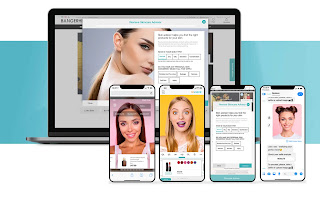Chatbots are not new in the tech world. The thought of designing a machine (chatbot) that had humanlike thinking once seemed like an illusion, but now its application is beginning to influence the industry. ChatBots might sound like an alien, but you have no idea what we all have accomplished by chatbots. They are not only gaining popularity in the business world, but people are also implementing bots in their businesses.
Now, let us first understand what does a bot means?
A bot is an artificial intelligence software designed to perform a list of activities on its own without the help of a human being. A bot can do tasks such as marking a date on the calendar, making a reservation at a restaurant, or collecting and presenting information to its users and notifying the user about the weather, etc. The most common example of a bot is a chatbot.
Chatbots are automated responses or chat support that interacts with humans via text messages. They are also known as chat robot, chatterbox, etc. They help you proactively engage with customers. They answer basic how-to questions, enabling agents to concentrate on complicated issues. They help the agents by saving their time and also benefit their potency.
How does a Chatbot work?
Chatbots are of two different types, a Rule-based bot, and artificial intelligence(AI)bot.
Rule-based bot:
A rule-based bot answers questions based on some fixed rules i.e. they respond to fixed commands. The creation of these bots is relatively straightforward so, if a person asks it the wrong thing, the bot will not recognize what the question implies, and therefore, will not provide an appropriate answer.
Artificial intelligence(AI) bot:
AI is the technology that enables the bot to learn from the intercommunications it has with the end-users. They can work based on a set of instructions or use machine learning. A chatbot that uses machine learning works great because it has an artificial brain. The bot understands not only commands but also languages. The user, therefore, does not have to use precise words to receive the right or helpful responses.
Generally, Chatbots uses artificial intelligence to communicate with people and deliver related content or recommendations.
Merits of chatbots
Chatbots are made to ease the pain that the industries are facing today. The goal of chatbots is to support and scale business teams in their relations with customers. It could live in any major chat applications like Facebook Messenger, Slack, Telegram, Text Messages, etc.
1) Cost-Effective:
Business owners have to pay their employees to operate a chatbot 24/7. As your business develops, this expense will also grow. Chatbots are a kind of investment that supports firms by cutting down on staffing expenses. It not only saves money but also helps saves the time that customer service agents have to spend solving mild problems. The reduction in staff size can help your organization save money.
2) Better customer engagement:
Humans are bound to change emotions. On the other hand, Chatbots restrict themselves by some rules, and they have to obey them. They will always excellently approach a customer no matter how rough the person is or how much foul language the person uses. They do not end up annoying users with irrelevant information. Instead, they grasp the customer's attention for a longer time by sharing compelling content.
3) Accessible anytime:
One of the biggest advantages of chatbots is that they are available for your customers 24/7. Since chatbots are virtual robots that never get bored or tired and continue to follow your request. They will continue to serve every day throughout the year without taking any rest.
4) Handling capacity:
Customers want all of their issues to be resolve as quickly as possible. When you don't solve their queries in time, they may shift to another company that offers better customer service. Humans can only talk with one human at a time, Chatbots can concurrently have conversations with thousands of people.
Snags about Chatbot
1) Made to Handle First-Level Questions
One of the greatest drawbacks of chatbots is that they have been designed to handle first-level questions only. If your resource doesn’t include answers to a specific question by any customer, your bot may fail to address the concerns that the customer has.
2) Requires Maintenance
Chatbots requires sustenance and optimization in terms of their experience base and the way they are supposed to interact with your customers.
You need to feed them with fresh, insightful content that they can apply to revert back to their customers requests and questions.
For this, you need to examine the communications your bots have and recognize the most frequent questions that your customers demand. You can then add answers to these questions to the knowledge base.
Wrapping Up
Chatbots have several advantages and disadvantages. However, with the introduction of new technologies and software solutions, the merits outweigh the drawbacks.
If new questions arise or you want to learn more about this exciting technology, feel free to discuss them with us in the comment section below or send us a word at soodtech01@gmail.com. We promise to be quick to answer.

























